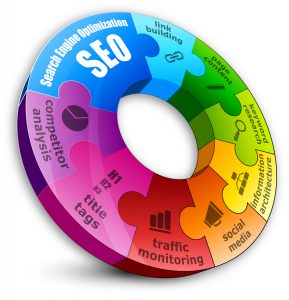How to Implement SEO Best Practices?
Search engine optimization is the process of getting your content to the top of search engines like Google. In order to do this, you need to follow a number of best practices and strategies.
(Looking for “SEO black hat techniques“? Contact us Today!)

First, it is important to define your SEO goals before you begin any work. This will allow you to focus on the SEO metrics that will have a real impact on your business objectives.
You will want to set measurable SEO performance goals such as increased e-commerce sales, market share growth or website traffic. Once you have those goals, it will be easier to develop a strategy to achieve them.
The most fundamental and essential step in any SEO strategy is to identify your target audience and their journey throughout the purchase funnel (ToFu, MoFu, BoFu). Understanding who is searching and what they want will give you a clear understanding of what keywords are most relevant to them.
It is also important to align your SEO strategy with all of your marketing initiatives, campaigns, and assets across the funnel. By using data from search to guide your strategy, you can ensure that all your marketing efforts are delivering the right content to the right people at the right time, ensuring an overall ROI on SEO.
Your title tag and meta description are often the first impression a visitor will have of your content, so it is crucial to make sure they are compelling. A well-crafted title tag can entice users to click, while a well-written meta description can persuade searchers that your content is relevant to their query and worthy of being displayed at the top of search results.
Keep your title tags under 60 characters and your descriptions under 150, avoiding truncation. Use title case for titles and sentence case for descriptions to ensure your titles and descriptions are readable to both humans and search engines.
You can also help visitors navigate your site by making sure each link works and links to the next bit of information on your page. The navigational elements on your website will need to be easy for visitors to find and work well with all browsers, including mobile devices.
Internal linking is an essential part of any strong SEO strategy. This is because it helps search engines crawl your entire site and understand what content you are serving up to the user. It is also a great way to drive traffic to pages that are monetizing for your business.
The more relevant your internal links are to your main keyword, the easier it is for users and search engines to understand what the linked page is about. The best way to do this is to create a few relevant internal links for every article you write and make sure they are using the primary keyword in their anchor text.
You should avoid spammy, manipulative and black hat methods of doing SEO because they will not be effective in the long term and will ultimately get you banned from the search engines. White hat methods are more sustainable and work for the long run because they are focused on providing the best experience possible to your human visitors.

Recent Comments